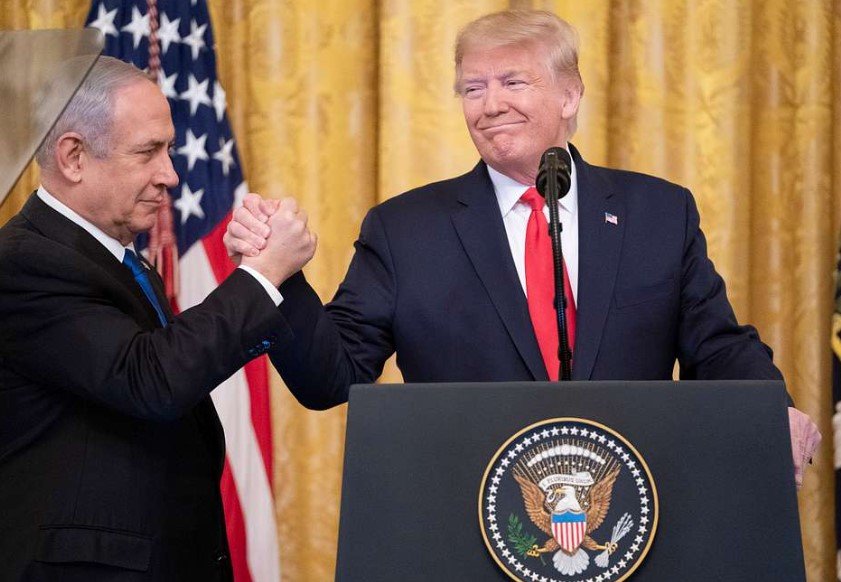As geopolitical tensions continue to escalate in the Middle East, President Donald Trump is making yet another bold move, aiming to foster peace and prosperity across the region. This week, he embarks on a critical journey to meet with key Gulf State leaders, seeking solutions to ongoing conflicts and building stronger economic partnerships. With his sights set on brokering a ceasefire between the U.S. and Houthi rebels, Trump is also striving to enhance strategic relationships, particularly in Saudi Arabia, Qatar, and the United Arab Emirates.
A High-Stakes Summit: Trump’s Mission to Bring Stability to the Middle East
Amid the persistent unrest in Gaza and ongoing clashes in other parts of the Middle East, Trump’s upcoming Gulf States Summit is generating significant attention. According to Texas Congressman Michael McCaul, who has been deeply involved in Middle East diplomacy, the president’s visit offers a unique opportunity to press for long-term stability in the region. With years of foreign policy experience under his belt, McCaul believes that Trump’s leadership is crucial at this critical juncture.
Trump’s approach has always been about fostering global peace, a vision he first outlined on the campaign trail. His strategic meetings this week aim to build upon existing alliances while also tackling emerging threats to U.S. interests in the region, such as the ongoing Houthi rebel activities in the Red Sea. The recently announced ceasefire between the U.S. and the rebels is a positive step forward, signaling Trump’s commitment to peace negotiations even in the face of violent opposition.

McCaul, a seasoned foreign affairs leader, recently met with King Abdullah II of Jordan to discuss the broader implications of U.S. policy in the region. As one of America’s strongest strategic allies, Jordan’s perspective on Middle Eastern stability holds great weight, and it seems both nations are unified in their goal of achieving lasting peace.
This summit presents an ideal platform for Trump to solidify his Middle Eastern strategy. By meeting with influential leaders in Saudi Arabia, Qatar, and the UAE, Trump is seeking to reinforce strong diplomatic and economic ties that will benefit the U.S. and its allies for years to come. The president’s team has emphasized that the upcoming discussions will focus on everything from security cooperation to economic growth, with an underlying goal of reducing conflict and fostering regional prosperity.
Economic Gains Through Strategic Alliances: The U.S.-U.K. Deal as a Model for Success
While peace is a primary focus of his trip, President Trump is also eager to discuss the importance of economic partnerships with the Gulf States. One of his major achievements back home has been the new trade deal between the United States and the United Kingdom, an agreement aimed at enhancing economic prosperity on both sides of the Atlantic.
The deal, formally known as the Economic Prosperity Deal (EPD), focuses on creating a more equitable and fair trade framework between the U.S. and the U.K. Through this agreement, tariffs on British steel and aluminum are set to be reduced significantly, while the U.K. will remove all tariffs on U.S. aerospace and industrial goods. The agreement is seen as a win for American businesses, particularly those involved in aviation and industrial manufacturing. Moreover, this deal also includes provisions to streamline customs processes, further enhancing trade efficiency.
For the state of Texas, the deal holds particularly significant promise. As one of the largest exporters in the U.S., Texas stands to benefit greatly from increased access to the British market. The EPD includes provisions for 13,000 metric tons of tariff-free beef exports, creating a $5 billion opportunity for local farmers and ranchers. These exports will help strengthen Texas’ agricultural sector, ensuring the state remains a key player in international trade.
What Trump’s Middle East and Trade Strategies Mean for America
With his ongoing push for peace in the Middle East and his efforts to secure advantageous trade deals, President Trump is positioning the United States for future success on multiple fronts. The Gulf States Summit offers the opportunity for a strategic recalibration in the region, while the U.S.-U.K. trade deal sets the stage for stronger transatlantic relations. For those concerned about the economic implications of global politics, it’s clear that Trump’s foreign policy approach is focused on both stability and prosperity.
-
Peace Initiatives: Trump’s involvement in Middle Eastern diplomacy is a testament to his commitment to global peace, particularly with his efforts to mediate conflicts and form strategic partnerships.
-
Economic Prosperity: The U.S.-U.K. trade agreement is already providing measurable benefits for American farmers, manufacturers, and ranchers, and signals Trump’s commitment to strengthening economic ties globally.
-
Strengthened Alliances: Through his meetings with leaders in Saudi Arabia, Qatar, and the UAE, Trump aims to solidify the U.S.’s position as a key strategic ally in the Middle East.
Charting a Path Forward: The U.S. and the Global Stage
It’s easy to overlook the complexity of foreign policy initiatives, but President Trump’s approach to the Middle East and international trade is undeniably aimed at bringing long-term stability and prosperity. Whether it’s negotiating peace with hostile factions or fostering trade relations that benefit American citizens, the president’s ongoing efforts are making waves. The results, both in terms of regional security and economic growth, remain to be fully seen, but for now, Trump’s track record indicates he’s more than willing to continue pushing for lasting solutions.
